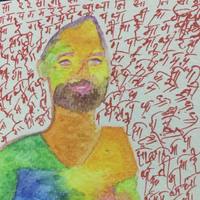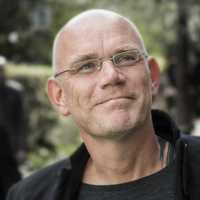Journal Articles by Eugenia Siegel Conte
Resonance: The Journal of Sound and Culture, 2022
Through an examination of four contrasting moments of public intervention, we investigate the son... more Through an examination of four contrasting moments of public intervention, we investigate the sonic and cultural implications of "making a scene"—a style of social engagement that draws attention and exceeds expectations of the normative social functions of a particular space. Capturing attention through expressive inflections of difference, making a scene momentarily flips the social logics of a place, revealing public space as a sight of contestation characterized by the unequal flow and uneven habitability of different bodies and voices.
Papers by Eugenia Siegel Conte
Yale Journal of Music & Religion, 2018
Thesis Chapters by Eugenia Siegel Conte

In this dissertation, I analyze how singers make use of internal and external space to achieve af... more In this dissertation, I analyze how singers make use of internal and external space to achieve affective goals in choral practice at the semi-professional and professional levels. I investigate how space, body, and voice are interconnected when experiencing emotion; and how choral practice activates and relies on this interconnectivity and legacies of religious meditation and attention. Observing and working with professional choral singers over the last several years—including groups VOCES8, The King’s Singers, The Tallis Scholars, Roomful of Teeth, Voices21C, and others—I seek to broaden the scope of scholarship around choirs. Professional vocal ensembles follow rules and mores governed by each singer’s physical reactions and vocal adjustments within spatial acoustics. Recognizing groups’ affective goals can reveal how singers function as both listeners and diagnostic bodies, adjusting to a given space and adapting their voices for specific purposes. I connect physical diagnostics of space and voice to the affective embodiment of feeling, memory, and cultural mores in shared experiences, and show how group singing hones skills inherent in affective embodiment in ways that are crucial in choralism. Diagnostic embodiment—a cyclical set of adjustments in which singers use sensorial embodied aspects of group vocality to guide further physical-sonic adjustments as they continue to sing—is, I contend, a defining process of choral practice.I identify four areas in current professional choral practice—traditional, cinematic, experimental, and activist/advocacy. The dissertation includes fieldwork with ensembles that exemplify these categories. I explain how differing rehearsal and performance goals are revealed when singers consider intended affect. Techniques from traditional practices of choralism have been adopted and modified within cinematic, experimental and activist/advocate strands of choral practice, creating a new ethics of affective curation that underline moral/religious undertones of choral experience. I show that vocal, physical and affective mechanisms, along with cultural comprehension and social investment, are tied together in “affective regimes” (Mankekar and Gupta 2016), hegemonic guides through physical, mental, and emotional experience curated through various controlling powers and actors in choral practice.I discuss how collaborative voice—combined with other voices and mixed within the acoustic spaces—complicates ideas of the individual body. This work shows that physical sensation is an often-overlooked or -oversimplified aspect of metaphysical experiences and faith, and that choral vocality has become a gateway to meditative affective states within many worship traditions. These meditative affective states have been transplanted, in the modern post-religious era, into film and television soundtracks in a way that perpetuates choralism as an affective trigger supporting considerations of morality, ego, individualized narrative, and ethics. Expanding upon these connotations and mechanisms, I detail how the ensemble Roomful of Teeth connects with the physiological and emotional triggers identified in cinematic choralism—sometimes relying on white hegemonies to present “experimental” voices taken from colonized and/or disenfranchised groups. In the final chapter, I turn to my own experiences within ensemble Voices 21C to consider whether the sensorial honing of diagnostic embodiment could potentially allow choral participants to listen differently to others and expand their community of care (Cheng 2016).











Uploads
Journal Articles by Eugenia Siegel Conte
Papers by Eugenia Siegel Conte
Thesis Chapters by Eugenia Siegel Conte